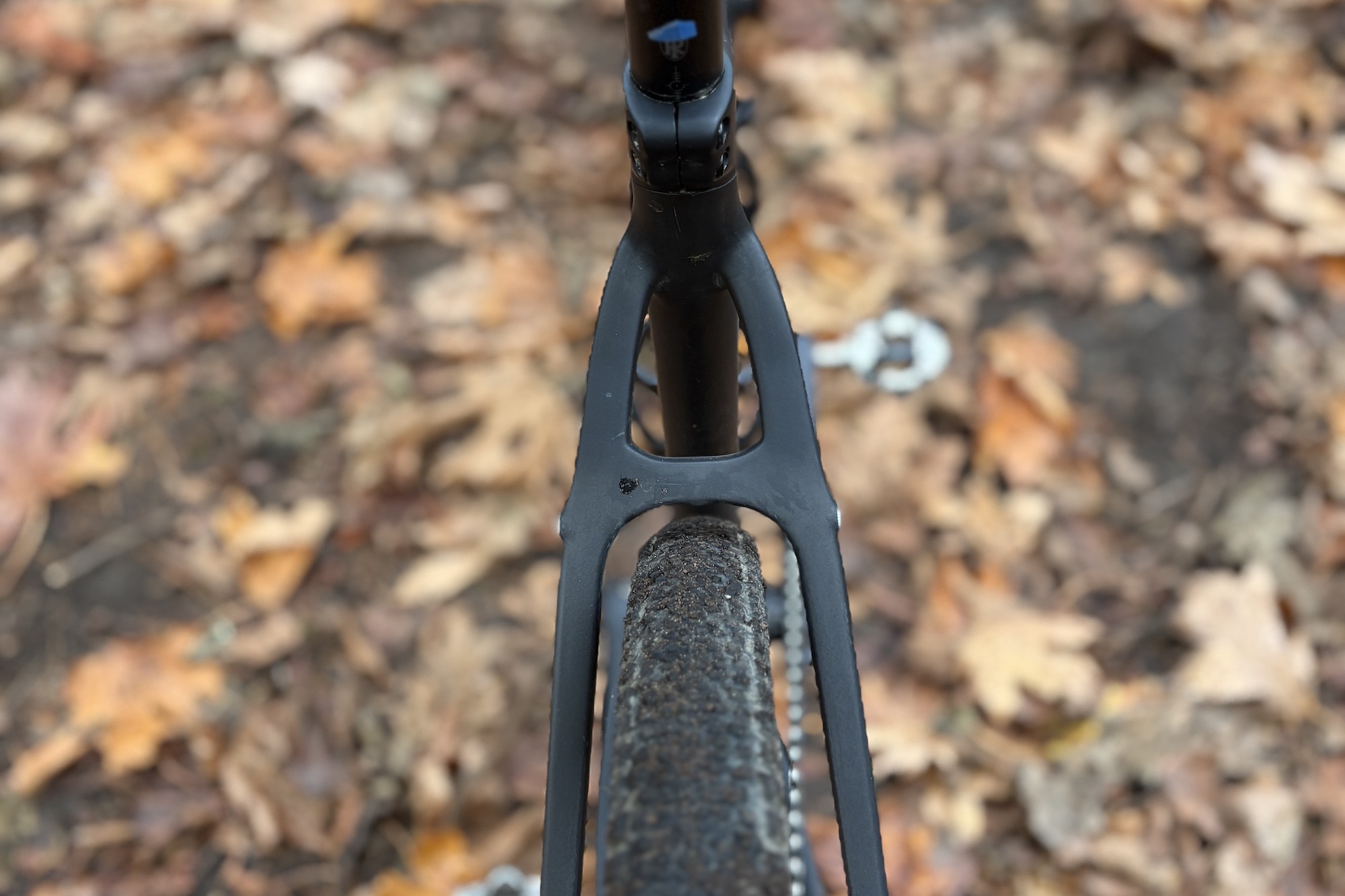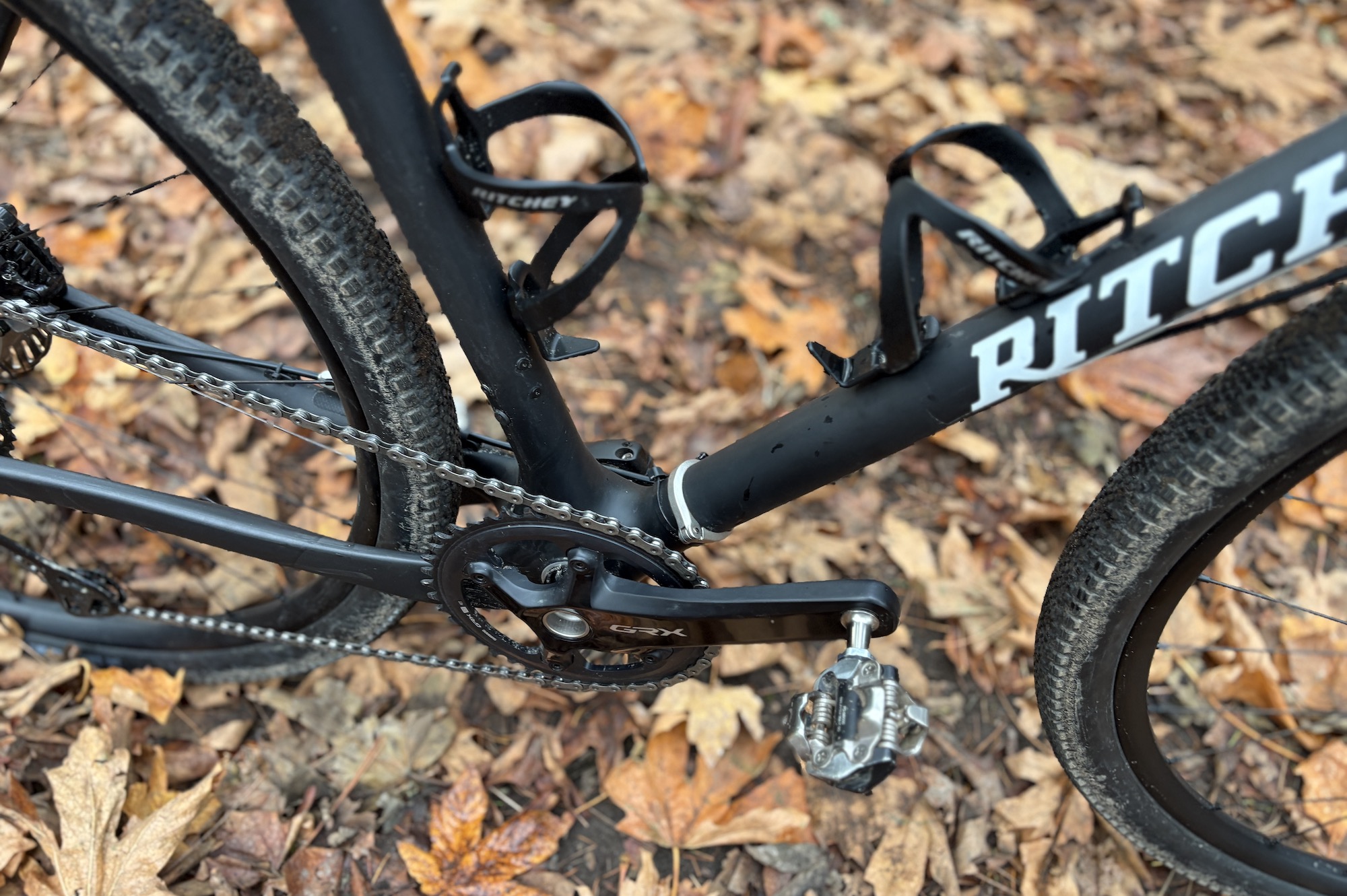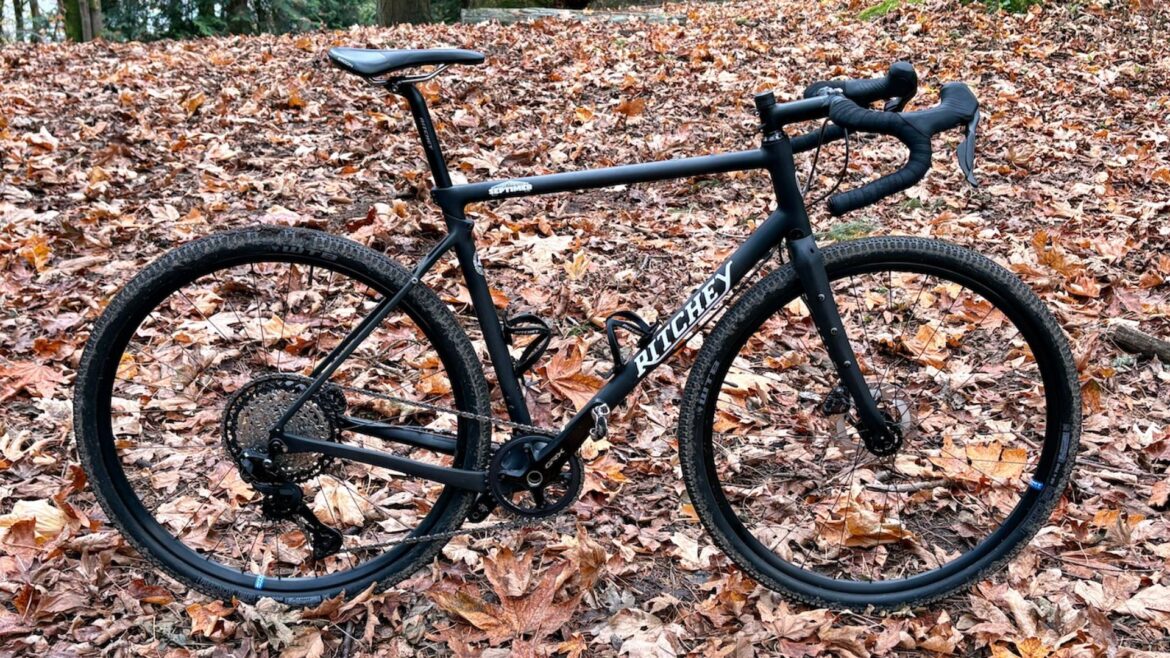Can a single bike be capable of performing everywhere, across varied terrain? American company Ritchey, founded by legendary framebuilder and designer Tom Ritchey, thinks so. The Ritchey Septimer was designed to be a bike collection in a single frame. It’s a bike that is comfortable on road and gravel, and, as a bonus, can be disassembled for travel, utilising Ritchey’s relatively user-friendly Breakaway system. Tom Ritchey was one of the early innovators of mountain biking, and the Septimer was created to match his vision of an everyday, go anywhere bicycle. In his own words, it’s “basically a big tyre road bike.”
One single, do-everything bike may seem like anathema to the N+1 culture that so many cyclists embrace, but depending on where you live, a single capable bike with multiple wheel and tyre options can provide a compelling alternative. Does anyone really need multiple bikes?
Design and construction

(Image credit: Tyler Boucher)
The Septimer is a carbon, all-road bike designed to accommodate up to 700 x 48mm tyres. It is designed with mechanic-friendly features like external routing, a threaded bottom bracket and a round, 27.2mm seatpost. The bike can be built with either 1x or 2x drivetrains (with a removable front derailleur mount) and works with both electronic and mechanical options (Ritchey sells mechanical guide kits separately).
The carbon tubing was designed to be robust enough for regular riding as well as travel, with the aim for it to be “as similar to steel as possible while keeping the characteristics carbon is known for,” according to Ritchey.
One trick it has up its sleeve is Ritchey’s Breakaway system, which allows the frame to be separated and packed for travel. Broken down, a complete bike fits into a very compact 27 x 30 x 9-inch travel case that Ritchey provides with the frameset.
Sizes offered range from S-XL, with reach measurements ranging from 380 to 415mm. The smallest frame size has a 535mm effective top tube length, so it likely won’t work for smaller-statured riders. Chainstay length is consistent across all sizes on offer, measuring a longer-than-is-currently fashionable 440mm.
Fork rake is also the same across the size range, but head tube angles change to suit each geometry. Bottom bracket drop is a fairly neutral 75mm. Burly dropped chainstays are plenty stiff enough for efficient power transfer, and the design of the Breakaway system allows for tube profiles that retain good ride quality characteristics.
The Septimer includes top tube bag mounts, as well as fork and rear rack mounts, making travelling with bags a possibility. It also has fender mounts, which is unusual but very helpful for a bike of this kind.
Something to note: the test bike provided was a pre-production model, and Ritchey has indicated that a few of the cable routing and other small details may be different in its final form.
Specifications

(Image credit: Tyler Boucher)
- Frame material: Carbon, with stainless steel joints
- Price: $3499.00 / €3399.00 / £2958.00
- Weight: 1,360 grams, listed (frame only, size L); 21.01 lbs as tested (with bottle cages and pedals)
- Sizes: S, M, L, XL
- Colours: Black, with white decals
- Build options: Frameset only
The Ride

(Image credit: Tyler Boucher)
Though Ritchey sells the Septimer as a frameset only (as the company does with all of its bicycles) my test bike was built with a collection of Ritchey’s extensive catalogue of components. Ritchey produces nearly every piece needed to build a bike, from bottle cages to wheels, to headsets and cockpit components. In fact, other than the Shimano GRX 12-speed wireless electronic drivetrain, the only other non-Ritchey item on my test bike was WTB’s 45mm Riddler knobby tyres.
The bike arrived packed in its travel case, fully disassembled. To put it together, I first needed to install the fork and headset bearings, then join the front and rear halves of the frame together. This is accomplished by joining the downtube junction with the included clamp and then tightening the two-part seat tube/top tube junction around the seatpost. This holds the frame securely together without issue, though it does slightly complicate the process of adjusting the saddle height, as it requires fussing with four different bolts to do so.

(Image credit: Tyler Boucher)
Since the drivetrain is wireless, no additional steps were needed other than threading on the rear derailleur and installing the chain. The final step was connecting the hydraulic brake hose to the rear brake with a coupler. I would imagine this is something you would learn how to use with some practice, but I managed to bungle it and had to rebleed the rear brake to get the correct lever feel.
If I were keeping this bike long-term and travelling with it frequently, I would pick a different braking system that doesn’t use a hydraulic coupler for the rear line, since I worry too much about issues while travelling without access to mechanical support. I have written about this exact scenario before, during my testing of cable-actuated disc brakes and on my own travel/gravel rig.
Once built, I had the chance to take the Septimer out on the road and off it. The geometry on my size L bike blends a neutral-to-relaxed front end with the aforementioned long chainstays, which give the bike a very stable, comfortable feel. A cyclocross bike this is not! It’s not sluggish, per se, but is instead predictable and confidence-inspiring.
To get my riding position to work, I needed a fairly long, low bar-and-stem setup, which slightly compromised the front handling. Even with these somewhat extreme measures, I wasn’t able to get the front end as low as I would have preferred, but most riders do not require such an aggressive fit. Despite these fit compromises, the bike still felt stable beneath me, even on technical, XC-style terrain.
I tried my best to take it on as many different roads as possible, mixing gravel, paved roads and even tested the bike in a cyclocross race (sorry Ritchey!). On pavement, nobody would confuse the ride for that of a pure road bike, but especially with some lightweight tyres there’s no reason someone couldn’t enjoy the Septimer on a fast group ride. Where I live in Seattle has pretty rough roads, so the skinniest tyres I run on my own bikes measure around 36 mm. Going up to 45 mm tyres isn’t much of a jump.
Though Ritchey designed the bike around 48mm tyre clearance, this seems conservative to me, given the available clearance. Different tyre and rim combinations can change things, but I would think most 50mm tyres still would leave enough clearance for all but the muddiest conditions. And, by the looks of things, you could run 45mm tyres with fenders/mudguards pretty comfortably, which is my preferred winter riding setup these days. Maximum comfort.
Other than assembling the bike at the beginning of the test and breaking it apart to return it, I didn’t spend any time practising the disassembly process. From what I understand, this is typical for Ritchey’s customers. It’s a bike that just happens to split in half, and the company encourages people to ride it like a normal frame. The Breakaway system adds in some marginal weight, and certainly some production cost, but because of where the junctions are located, ride quality isn’t impacted—the tubes still retain their butted profiles with thinner walls in the middle.
The overall ride characteristics are the result of many geometry and design decisions, but the 440mm chainstays go a long way toward adding comfort to the ride. It also provides some breathing room for modern drivetrains (especially those with tight tolerances) to work effectively. Shorter chainstays often give bikes a racy, snappy feel but can cause cross-chaining problems. The electronic Shimano GRX groupset worked flawlessly for me, and I think this type of 1x drivetrain is the optimal setup for a bike of this nature.
Value and conclusion

(Image credit: Tyler Boucher)
Ritchey nailed the “all day, any road” feel with the Septimer, and there aren’t any specific things I can think of that would improve the performance for this sort of bike. Short chainstays may be fashionable, but long chainstays have their place too. By designing the Septimer around a comfortable, neutral geometry and pairing it with clearance for wide tyres, the bike can handle almost any road or gravel conditions, up to tame XC-type riding.
Not everyone is interested in owning just one bike, but for those who are, and who aren’t concerned about out-and-out speed or aerodynamics, the Septimer is a well-thought-out bike that can be configured in a variety of ways.
Price-wise, there aren’t many similar frames to compare it to, since it’s one of the very few travel-friendly carbon bikes available outside of boutique options. It’s pricey, but then it is unique.
What I think is holding this bike back are two things: first, the fact that riders will need to purchase and configure it from a frameset up. This isn’t a bad thing since it lets people choose exactly what they need, but it means that fewer people will have the chance to try it out as an off-the-shelf option. And second, the narrow size run, and especially the lack of smaller sizes, means that anyone under 5’6” or so doesn’t have a bike that will fit them very well. Hopefully, this is something that Ritchey will consider offering in the future.
